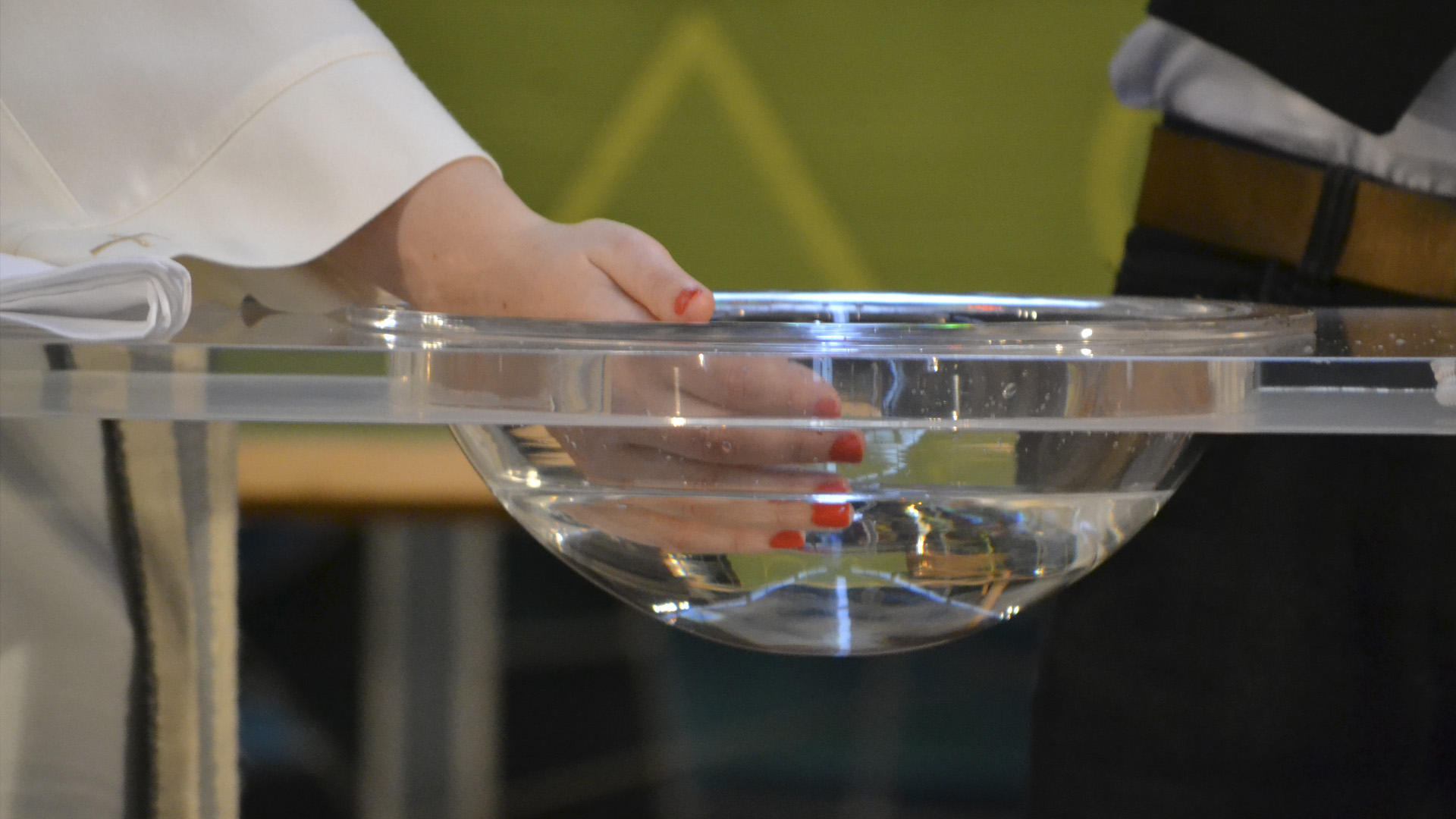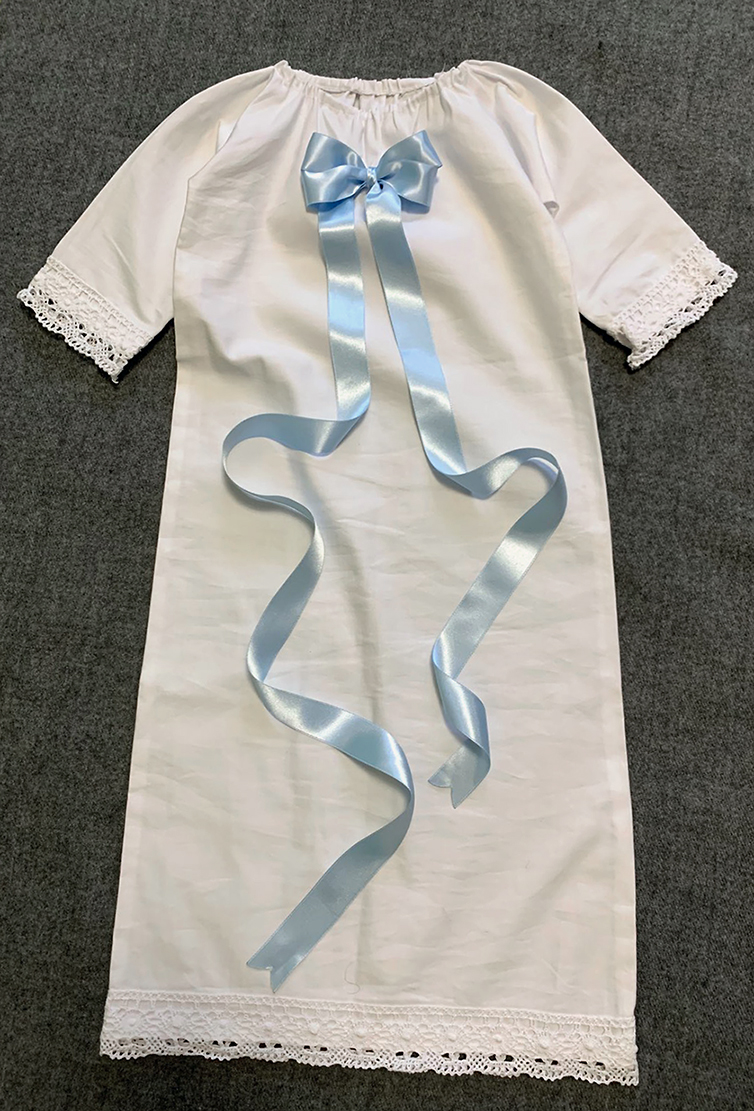Evästeet
EvästeetLinkki avautuu uudessa välilehdessä

In holy baptism a person is received into the universal Christian Church and the local parish. The Lutheran church baptises infants, older children and adults. Children often receive their names when they are baptised. This practice reminds us that God knows them by name.
Jesus instituted the ritual of baptism. That is why we call it a sacrament. (The other sacrament that the Lutheran Church recognises is Holy Communion aka Lord's Supper or Eucharist.)
If you wish to become a member of the Evangelical Lutheran Church and your local parish, if you're seeking baptism, or if you wish to have your child baptised, please get in touch with your local parish. We recommend you do this well in advance of your desired date.
► Find your local parish here.
A child under the age of 12 can only be baptised and received as a member of the Evangelical Lutheran Church if at least one of the legal guardians is a member of the Church. Infants are often baptised around the age of two months, but there is no age limit. For children and youths aged 12 to 17, written permission from both the child and their guardian(s) is required, but the guardians do not need to be members of the Church themselves.
The Evangelical Lutheran Church does not re-administer baptisms. Therefore, those who have received Christian baptism earlier will not be baptised again and can join the church without baptism.
Youths and adults will receive education in the Christian faith and the Lutheran confession before baptism and registration as church members. Baptism and confirmation classes can be given in private or in groups.
Baptism is administered by a pastor in a church, a chapel or other church premises, but it is also possible to have the ceremony at home or another suitable place. Likewise, baptism can occur in a regular worship service, although a private ceremony is usually preferred. Regardless of the manner and location, baptism is always a Christian worship service and a family occasion.
The baptism ceremony is a special worship service with a specific structure. But there are many ways in which you can make it a unique event in celebration of your baptism or the baptism of your child.

Preparations for baptism are made in close connection with the local parish. Therefore, the first thing to do is contact the parish office and tell them about your wish to get baptised or have your child baptised. The parish office will help you pick a time and place for the event. They will also assign a pastor to officiate at the baptism. If you have a certain pastor in mind, for example, your family pastor, wedding pastor, or confirmation pastor, you should contact that pastor directly to ask whether they would take care of the baptism. Remember to inform the parish office if you have asked a pastor from elsewhere.
The pastor will make an appointment with you a few weeks before the baptism date to discuss the meaning of baptism, the choice of godparents, and the details of the ceremony. If appropriate, also the names to be given in baptism to your child will be discussed. It is natural to have this discussion in your home, especially if you want the ceremony to take place there. But of course, you can also meet at the parish office or the church or chapel where the baptism will take place.

Small children are usually dressed in a long white gown, whereas youth and adults wear an alb at baptism. The white colour symbolises purity and holiness. Many families have a gown that is passed on within the family and that may even have the names of the baptised children embroidered in it. You can also make or buy a new gown for your child. It is possible to borrow a gown from your parish for the occasion. Remember to check availability and reserve one well in time.
If the ceremony takes place at home, you will be asked to prepare a baptism table, which acts as a small altar. It would be good to cover the table with a white linen and adorn it with a candle, a Bible, and fresh flowers. The candle is a symbol of prayer and of the light of Christ, but it also has a very practical purpose. The pastor will use it to light the baptism candle after the child has been baptised. If you have a wedding Bible, it will serve well as a reminder of the marriage vows you made to one another. These promises also form the foundation for a safe and loving home for the child.
Since the baptism ceremony is a form of Christian worship, hymns or spiritual songs are an integral part of the celebration. In the Finnish Hymnal ↗Linkki avautuu uudessa välilehdessä, there is a section of baptism hymns, hymns 214–219. Some of these hymns are only appropriate for infant baptism. Also, the section “Children” (hymns 490–503) and hymn 971 are popular choices for the baptism of children. For young people, you will find some well-known hymns from the sections “Confirmation” (hymns 233–237) and “Youth” (hymns 504–517). The following hymns are available in Finnish and English:
The baptism service will always include a reading of the Great Commission (Matthew 28:18–20 ↗Linkki avautuu uudessa välilehdessä). When a child is baptised also the Children’s Gospel (Mark 10:13–16 ↗Linkki avautuu uudessa välilehdessä) is read. In addition, you may want to choose other Bible readings.
Whether the baptism takes place in a church or at home, it seldom starts exactly on time. Often, the last-minute preparations take more time than anticipated. When all is ready, the service opens with a hymn, after which the pastor speaks the words of blessing and introduction.
The pastor asks the parents what name they have given the child. He also asks parents and godparents whether they will take responsibility for the Christian upbringing of the child (or alternatively, he will exhort them to do so).
Next, the pastor will make the sign of the cross on the forehead and the chest of the child. This is followed by a prayer and the reading of the Children’s Gospel (Mark 10:13–16), often by one of the parents, grandparents, or godparents. The pastor will then give a short speech (sermon or homily).
The actual ritual of baptism is introduced by the reading of the Great Commission (Matthew 28:18–20), in which Jesus institutes the sacrament of baptism. Again, this can be read by one of the parents, grandparents, or godparents. The whole congregation then joins in the confession of faith, using the Apostles’ Creed ↗Linkki avautuu uudessa välilehdessä.
On the joint profession of faith, the child is then baptised in the name of the Father, the Son, and the Holy Spirit. The pastor will pour out water three times on the child’s head. It is good to have an extra white cloth at hand to wipe the water dripping from the child’s head. Often, this is an important privilege given to an elder sibling or other child present at the ceremony. The pastor will then light the baptism candle and hand it to one of the parents. The candle symbolises the light of Christ.
The service continues with a prayer of intercession, in which parents, grandparents, godparents, and other guests may participate, followed by the Lord’s Prayer. The pastor blesses the whole congregation with the Benediction, and the congregation sings the closing hymn.
EvästeetLinkki avautuu uudessa välilehdessä